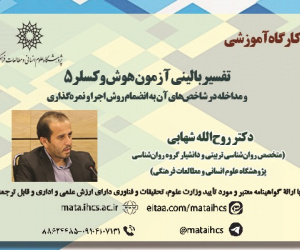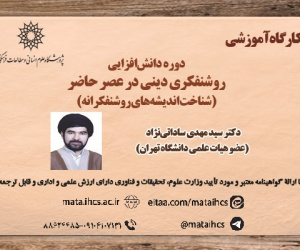آینده پژوهی چشم انداز ژئواکونومیکی منطقه ی آزاد تجاری- صنعتی ارس (مقاله علمی وزارت علوم)
درجه علمی: نشریه علمی (وزارت علوم)
آرشیو
چکیده
در این تحقیق که از روش توصیفی-تحلیل استفاده می کند سعی می شود با کمک ادبیات کتابخانه ای و داده های آماری، در چارچوب فلسفه وجودی و اهداف کلان اقتصادی مناطق آزاد، چشم انداز ژئواکونومیکی منطقه آزاد تجاری-صنعتی ارس در حوزه تجارت خارجی، سرمایه گذاری، ایجاد اشتغال، ترانزیت، گردشگری و آمایش اقتصادی-امنیتی نوار مرزی ارس با رویکرد روندکاوی مورد بررسی و تحلیل آینده پژوهی قرار گیرد. در کنار ابهاماتی که از لحاظ آماری در مورد عملکرد به طور کلی مناطق آزاد تجاری ایران و به طور خاص ارس وجود دارد، ارزیابی چشم انداز ژئواکونومیکی ارس بیانگر کارایی بسیار ضعیف و به بیان دیگر ناکامی ارس در دستیابی به اهداف اصلی خود است. در واقع نتایج تحقیق نشان می دهد که از دیدگاه ژئواکونومیکی، چشم انداز مناطق آزاد تجاری در ایران بازتابی از چشم انداز اقتصاد ایران در مقیاس ملی است که وضعیت حاکم بر منطقه آزاد ارس نیز جدا از این نیست. به عبارت دیگر چشم انداز، اندازه اقتصاد و دایره نفوذ ژئواکونومیکی مناطق آزاد تجاری ایران را باید با چشم انداز، اندازه اقتصاد و دایره نفوذ ژئواکونومیکی اقتصاد کشور سنجید. با توجه به روند کلی حاکم بر اقتصاد کلان ایران، روند حاکم بر چشم انداز ژئواکونومیکی و عملکرد اقتصادی مناطق آزاد کشور چیز غیرطبیعی نیست. بااین حال، ظرفیت ژئواکونومیکی اقتصاد ایران بسیار فراتر از این است و به راحتی می توان با برنامه ریزی و سیاستگذاری اصولی و خصوصاً در چارچوب نگرش خلق منفعت ملی از وضعیت موجود گذر کرد که نتایج آن قطعاً در مناطق آزاد تجاری نیز متبلور خواهد شد. از سوی دیگر، با ادامه وضعیت فعلی و سیاست های موجود، بعید نیست در آینده نزدیک خصوصاً از دیدگاه ژئواکونومیکی، پروژه مناطق آزاد تجاری در ایران به یک پروژه کاملاً بی اثر و غیرجذاب تبدیل شود.Future studies of the geo-economic outlook of the Aras Free Zone
This study employs a descriptive-analytical method to examine and analyze the geo-economic outlook of the Aras Free Trade-Industrial Zone in relation to foreign trade, investment, job creation, transit, tourism, and economic-security planning for the Aras border area. The research employs trend analysis and futures studies, drawing on library literature and statistical data within the framework of existential philosophy and the macroeconomic goals of free zones. Despite the statistical uncertainties surrounding the performance of Iranian free trade zones in general and Aras in particular, the evaluation of Aras's geo-economic outlook reveals significant inefficiencies, indicating a failure to meet its primary objectives. The findings demonstrate that, from a geo-economic perspective, the prospects for free trade zones in Iran reflect the broader economic situation of the country, with the Aras Free Zone being no exception. The outlook, economic size, and geo-economic influence of Iran’s free trade zones should be assessed in comparison to those of the national economy. Given the prevailing trends in Iran’s macroeconomics, the geo-economic outlook and economic performance of the country’s free trade zones are not surprising. However, the potential of the Iranian economy is much greater than what is currently being realized. This situation can be effectively improved through principled planning and policymaking, particularly within a framework that prioritizes national interests, the benefits of which would undoubtedly extend to the free trade zones. On the other hand, if the current conditions and existing policies continue, it is likely that the free trade zone initiative in Iran will become entirely ineffective and unattractive in the near future, especially from a geo-economic perspective.







